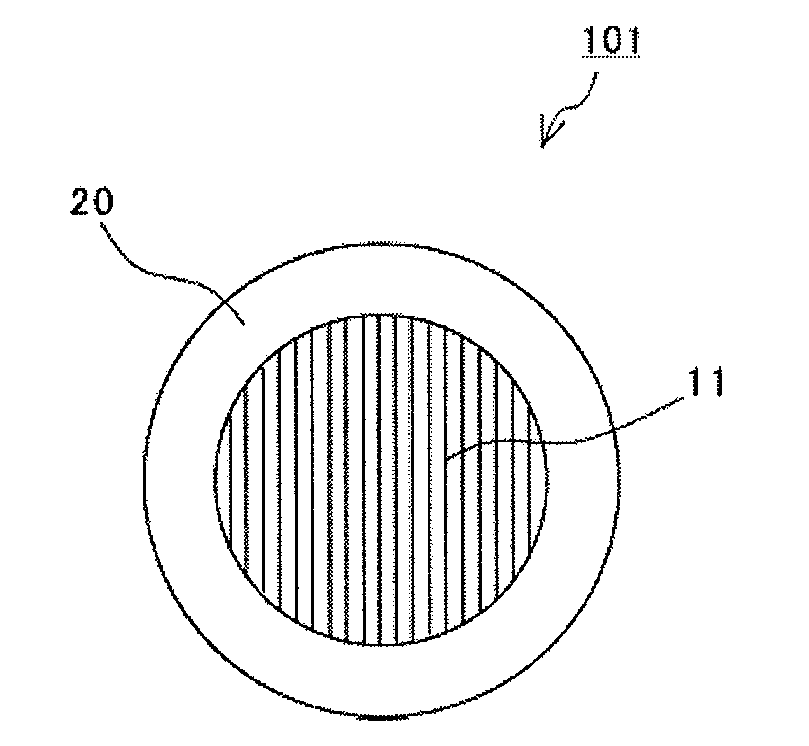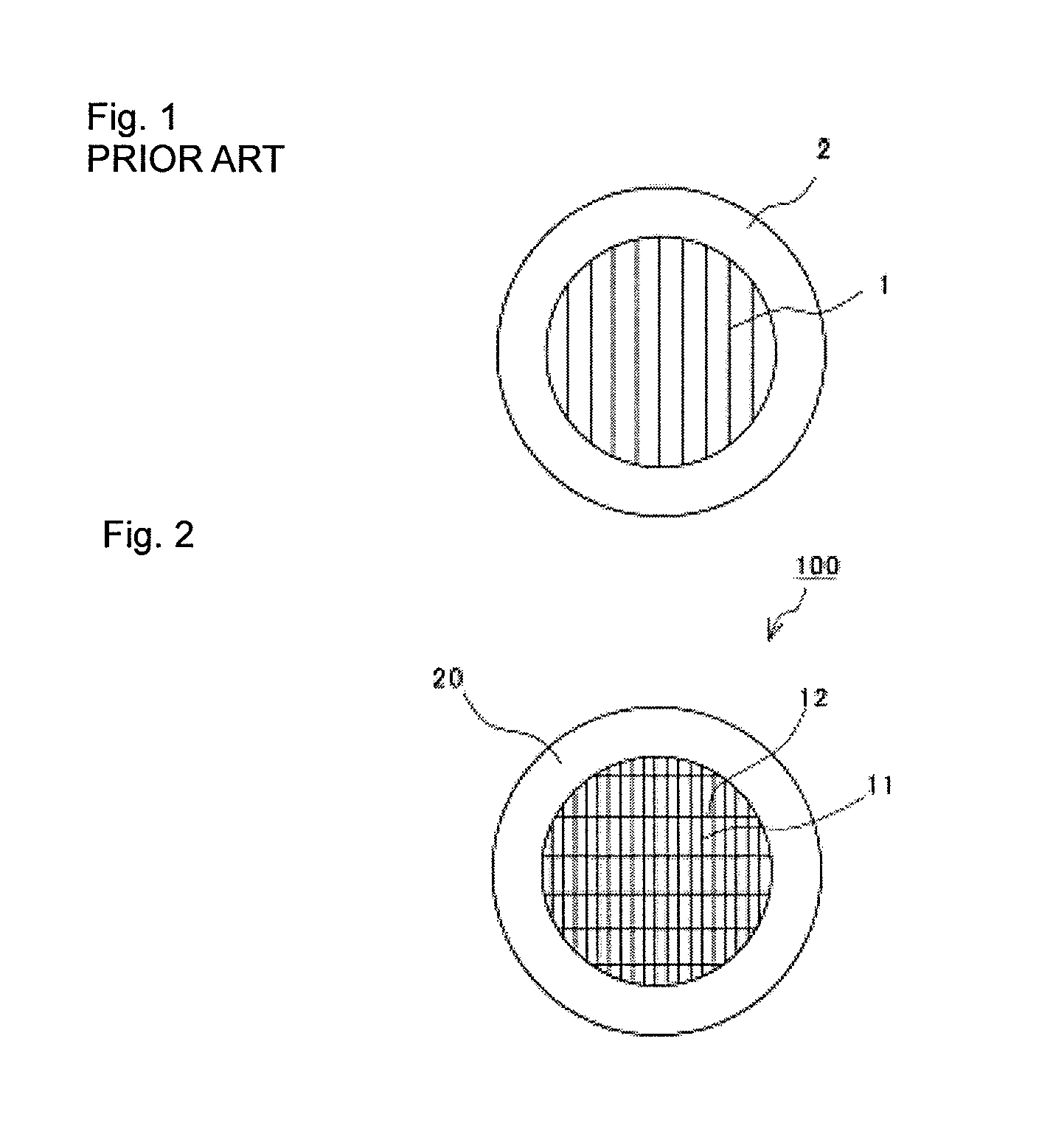Wire Grid and Manufacturing Method Thereof
- Summary
- Abstract
- Description
- Claims
- Application Information
AI Technical Summary
Benefits of technology
Problems solved by technology
Method used
Image
Examples
first embodiment
[0041]A metal plate for a wire grid and a method for manufacturing the wire grid according to a first embodiment will be described with reference to FIGS. 2 to 4.
[0042]FIG. 2 is a plan view of a wire grid 100 according to the first embodiment. This wire grid 100 is obtained by attaching a textile to a ring frame body 20, the textile including a plurality of stainless steel wires (hereinafter, simply referred to as stainless wires) 11 extending vertically and silk yarns 12 extending horizontally while crossing one by one alternately with respect to the stainless wires 11.
[0043]When the wire grid 100 shown in FIG. 2 is used as a polarizer or analyzer, electromagnetic waves are made incident in a direction perpendicular to a surface of the wire grid 100. With incident electromagnetic waves having a plane of polarization parallel to the stainless wires 11 of the wire grid 100, the electric field component of the electromagnetic waves generates an electric current in the stainless wires ...
second embodiment
[0062]A metal plate for a wire grid and a method for manufacturing the wire grid according to a second embodiment will be described with reference to FIG. 5.
[0063]While the wire grid fabric with the insulating yarns left in place is used in the first embodiment, this second embodiment provides a wire grid fabric fixed in a frame body with insulating yarns removed.
[0064]FIG. 5 is a plan view of a wire grid 101 according to the second embodiment. This wire grid 101 is obtained by attaching a textile to a ring frame body 20 and then removes the silk yarns, the textile including a plurality of stainless wires 11 extending vertically and silk yarns 12 extending horizontally while crossing one by one alternately with respect to the stainless wires 11.
[0065]Specifically, processing such as burning the insulating yarns causes the yarns to substantially disappear. Alternatively, chemically soluble yarns are used as the insulating yarns, and the insulating yarns are dissolved in a liquid, wit...
third embodiment
[0067]While the textile with the conductive yarns and the insulating yarns is used in the first and second embodiments, the third embodiment uses conductive yarns for both warp yarn and weft yarn.
[0068]FIG. 6 is a plan view of a wire grid 102 according to the third embodiment. This wire grid 102 is obtained by attaching a textile to a ring frame body 20, the textile including a plurality of stainless wires 11 extending vertically and stainless wires 13 extending horizontally while crossing one by one alternately with respect to the stainless wires 11.
[0069]The pitch for the stainless wires 11 as warp yarn is made to have the ¼ wavelength of a wavelength to be polarized and analyzed, whereas the pitch for the stainless wires 13 as weft yarn is made 10 times as long as a wavelength to be polarized. When the pitch for the stainless wires 13 as weft yarn is 5 or more times as long as the wavelength, the increase in loss due to the existence of the stainless wires 13 can be suppressed to...
PUM
| Property | Measurement | Unit |
|---|---|---|
| Length | aaaaa | aaaaa |
| Length | aaaaa | aaaaa |
| Diameter | aaaaa | aaaaa |
Abstract
Description
Claims
Application Information
 Login to View More
Login to View More - R&D
- Intellectual Property
- Life Sciences
- Materials
- Tech Scout
- Unparalleled Data Quality
- Higher Quality Content
- 60% Fewer Hallucinations
Browse by: Latest US Patents, China's latest patents, Technical Efficacy Thesaurus, Application Domain, Technology Topic, Popular Technical Reports.
© 2025 PatSnap. All rights reserved.Legal|Privacy policy|Modern Slavery Act Transparency Statement|Sitemap|About US| Contact US: help@patsnap.com



